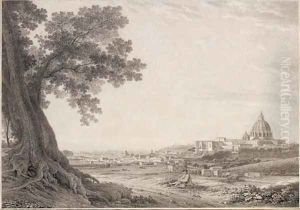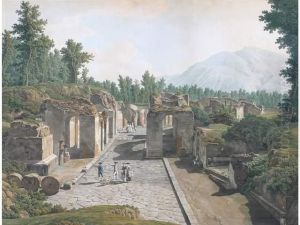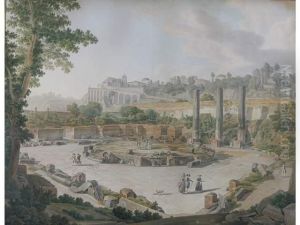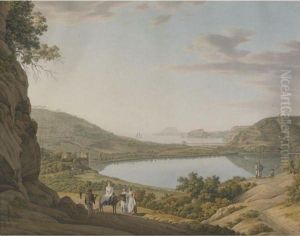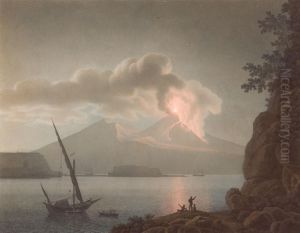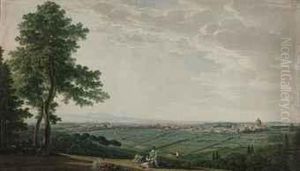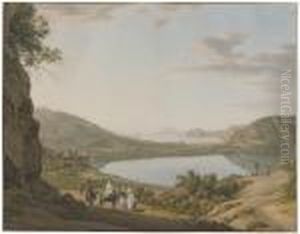Giovanni Battista Lusieri Paintings
Giovanni Battista Lusieri was an Italian painter, known primarily for his landscape and veduta (scenic view) paintings. Born in Rome in 1755, Lusieri was part of the neoclassical movement, which sought to revive the styles and subjects of classical antiquity. However, his work is also often associated with the beginnings of the Romantic movement due to his focus on natural landscapes and the effects of light.
Lusieri's talents were recognized early in his career, and he became a favored artist among the British aristocracy. In the late 18th century, he was employed by John Elgin, the British ambassador to the Ottoman Empire, who is best known for removing the marble sculptures from the Parthenon that are now known as the Elgin Marbles. Lusieri was initially hired to document these sculptures but soon became involved in the actual operation of their removal.
While Lusieri was not as famous as some of his contemporaries, he was admired for his meticulous approach to depicting landscapes and architectural details. His watercolors and drawings are characterized by their precision and clarity, capturing the subtleties of natural light and atmosphere with a remarkable degree of realism.
One of the defining moments in Lusieri's career was his move to Athens in 1803, where he lived until his death in 1821. During his time in Greece, he created some of his most memorable works, which serve as valuable historical records of Greek ruins before their more extensive archaeological excavation. Lusieri's works from this period are notable for their dedication to the accurate representation of ancient sites, which was a relatively new approach in the world of art.
Unfortunately, Lusieri's legacy suffered a blow when a ship carrying a large number of his works sank in 1828, leading to the loss of many of his paintings. Despite this setback, his remaining works can be found in various collections, including the British Museum. They continue to be studied and admired for their contribution to the understanding of neoclassical and romantic landscape painting. Giovanni Battista Lusieri died in Athens in 1821, leaving behind a body of work that reflects a unique blend of neoclassical precision and romantic sensibility.
